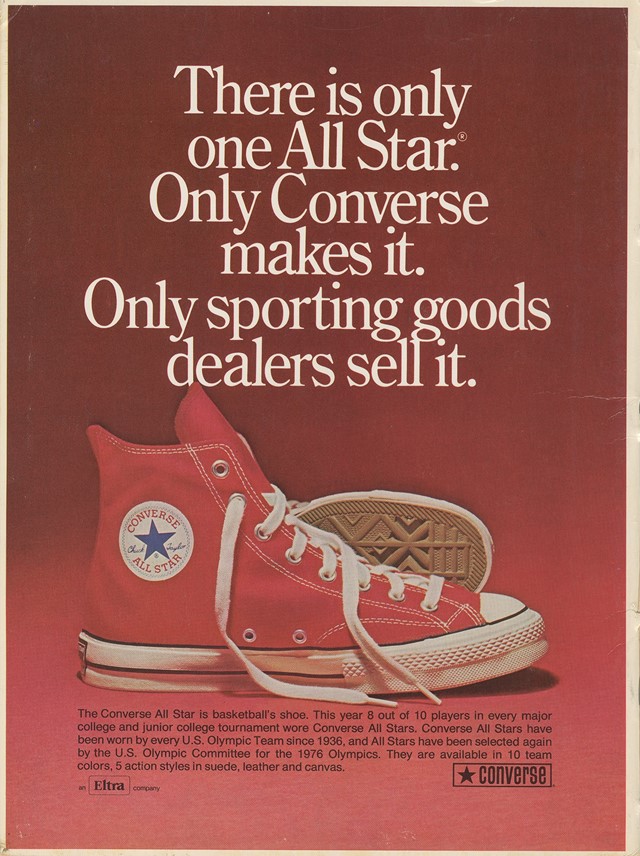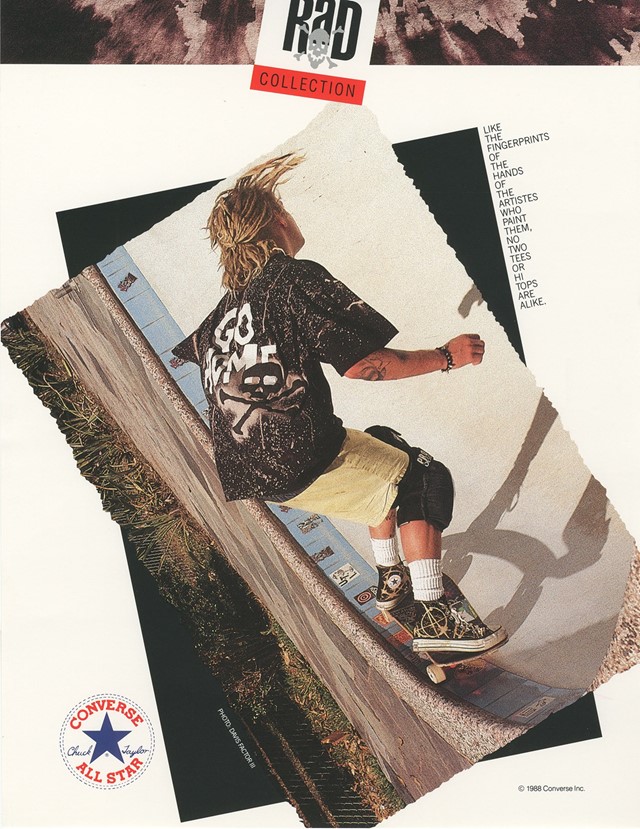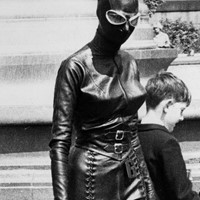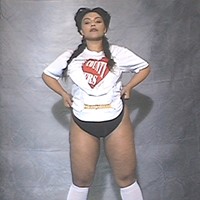Despite being almost 100 years old, the world’s most popular sneaker is still a resonant signal of nonconformity
Converse: Forever ChuckThe Converse Chuck Taylor’s enduring appeal defies the rules of coolness. It’s literally the most popular sneaker ever made, the great fashion unifier – and yet, despite being everywhere, somehow the iconic shoe remains covetable to pretty much everyone, from fashion’s most discerning critics to style-conscious musicians like Vince Staples or Rejjie Snow.
There is perhaps no product quite like the Chuck – ubiquitous, omnipresent but able to command collaborations with Comme des Garçons or the “godfather of Japanese streetwear” Hiroshi Fujiwara. Really, such credibility cannot be manufactured, but as a shoe that’s soon to be celebrating its 100th birthday, how did the Chuck Taylor outlive practically all of its peers to somehow straddle being available at every major footwear store in the country, and yet also remain a firm runway favourite?
As with so many iconic designs that have gone on to be adopted by youth tribes and various countercultural groups, its charm is its reliable simplicity, its trusty classicism. Its upper is an unchanging blank canvas upon which the wearer can choose to apply any sort of meaning or mantra – in some cases this is taken literally, with people even customising the shoe’s rubber outsole with scribbles and slogans in marker pen. This openness to interpretation has lent the shoe a rare cross-generational, cross-genre appeal that has spanned from Los Angeles gang-bangers to Seattle grunge-kids, Hunter S. Thompson to the modern-day Hypebeast. As such, it has come to occupy a rare space in the world of fashion, having touched on multiple subcultures whilst managing to transcended fleeting trends. In 2017, it is notable for being the antithesis to trend-led fashion – respite from fashion’s whims in the form of footwear.
Despite its current standing as a fashion staple, the Chuck Taylor’s origins were rooted in practicality. Born in 1901, in Indiana’s leafy, rural Brown County, Charles Hollis Taylor grew up dreaming of becoming a star basketballer. At the age of 17, he first stepped onto a court as a professional player, with the rubberised soles of his Converse All-Stars gripping the polished hardwood floor. A handful of years later in 1921, he walked into Converse’s Chicago sales office demanding a shoe that provided better comfort for players. Within two years, his name began appearing on that sneaker and, by 1932, his signature would begin to appear on the design, giving rise to its famous name.

The Chuck Taylor’s popularity, however, is far removed from the sporting arena. It is difficult to pinpoint the exact moment when the Chuck crossed over from simply being sportswear to the status it holds today as a broader cultural symbol, but the adoption of the style by The Ramones was one of the earliest moments that would give an inkling as to what the future would hold for the Chuck Taylor. “In the 60s and 70s, it was still rebellious to wear sneakers outside of the gym,” Tommy Ramone told Spin Magazine in 2012. “Doing that was anti-establishment. It was punky and snotty to wear sneakers instead of shoes.”
This association with rebelliousness has punctuated much of the history of the Chuck Taylor, which remained resolutely simple. It was this that also chimed with another rock icon, Kurt Cobain, who was almost never pictured out of a pair of Chucks, which he would regularly scrawl on. (He would also occasionally be spotted in some of Converse’s lesser known styles, such as the One Star and the Jack Purcell). The adoption of this sneaker was both a reflection of Cobain’s own humble, Americana aesthetic, and, according to Mark Arm of Mudhoney, a staple of Seattle’s grunge scene, something borne out of practicality: “Everyone in Seattle – Eddie Vedder, Kurt – we were all punk and hardcore fans. So it wasn’t really an aesthetic choice to wear Chuck Taylors; it’s just kind of what you did.” Likewise, it’s these associations which have given the sneaker an army of fans in everyone who’s ever listened to music which could be considered outside of the mainstream.
But, true to its ability to transcend boundaries, the shoe had also become a shared motif of the Blood and Crip gangs of the West Coast of America, which led to its dominance presence in hip hop style culture from the 80s to today. Naturally, each group would sport Chucks that reflected their gang’s colour – blue for Crips, and red for Bloods. “Growing up in Compton (Los Angeles) in the 80s, I started wearing Chuck Taylors by watching my older brothers, my friends, my uncles. All the gangbangers wore Chuck Taylors,” recalls Ice Cube of seminal Compton rap group N.W.A., who adopted black Chucks as a happy middle ground. “You’d see all these gangsters going to the surplus stores and buying Chuck Taylors because they looked good with a pair of khaki pants and a T-shirt. You could spend $60 and look fresh.”
“The Chuck Taylor has come to occupy a rare space in the world of fashion, having touched on multiple subcultures whilst managing to transcended fleeting trends”
That look of pressed Dickies chinos and Chucks would go on to be adopted by another style tribe some years later, with the release of Supreme’s seminal 2014 skate video, Cherry. The Chuck Taylor’s roots in skateboarding, however, stretch back much further. In fact, pretty much since the first day a drained swimming pool was repurposed by California's “sidewalk surfers”, the Chuck Taylor has been a go-to skate shoe. (You can even spot them in Larry Clark’s seminal teen skate movie Kids). And why not? The look good and, most importantly to skaters, they’ve always been affordable enough that when they are beyond beat-up, they can easily be replaced. These aren’t shoes to keep box-fresh.
Today, the air of subversion that once came with wearing a pair of Chucks has evolved, and in its ubiquity the shoe has gained a new sort of power. In 2013, trend forecasting agency K-Hole coined the term ‘normcore’ – it was a short-lived, or perhaps entirely imagined, trend of people dressing in deliberately conventional clothing but with a certain self-awareness, thus making it a semi-ironic fashion statement. And while the Chuck may not be ‘normcore’ in its strictest sense, its cultural value in 2017 is derived from a similar mindset: it is unassuming, humble and decidedly anti-fashion, to the point that wearing a pair can in some ways still feel like a subversive act.
One of the recurring traits of fashion in 2016 was the industry’s reappraisal of taste, pushing the elements of conventional taste to its very limit, or clashing high and low brow with great fervour. It saw Gucci doing its own bootleg t-shirts and Juicy Couture appearing at Couture week, courtesy of Vetements. In the midst of all that – the brash graphics, meta-irony and resultant think-pieces that would follow – it was, at times, not only comforting to return to items like the trusty Chuck Taylors, but it would also feel vaguely radical to don a pair. Fashion has always thrived on this dialogue between old and new – and the Chuck, with its vast history of subcultural co-signs, provided light relief to those trying to navigate ever-evolving trends with seemingly finite lifespans.
This year it would seem that little has changed – fashion brands are still competing desperately to stand out, on the runway and on Instagram, with hyped-collaborations and memeable slogans. The Chuck Taylor, however, does the opposite; it is timeless, a reassuring constant that somehow manages to still convey a sense of individuality – something the brand has explored in a three-part ‘Forever Chuck’ film series that unpicks the style’s widespread appeal, spanning fashion, music and culture. In 2017, the Chuck remains a chameleon-like symbol of individuality – in a room full of people wearing them, it’s unlikely two people will be donning them the same way or for the same reason. Maybe it’s somebody rejecting the ephemerality of fashion, maybe it’s a sulking skate-kid, or someone channeling a bygone subculture. It seems a paradox that the best selling sneaker of all time could still be a symbol of nonconformity – and yet, that’s exactly what it is.





